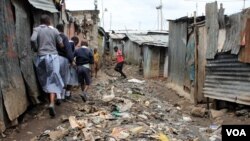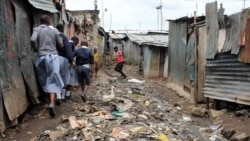Some 1.2 billion people survive on less than $1.25 per day. A dollar and a quarter is the World Bank’s threshold that quantifies the minimum consumption and income level needed to meet a person's basic needs. Today, that figure is widely considered to be the international poverty level, and those who live below it -- about one out of every six people, or 17 percent of the world’s population-- live in extreme poverty.
Extreme poverty is more than just a definition with a number attached to it; it signifies unfulfilled dreams, lost potential to the broader community, and a tough, hard-scrabble life.
It means a lifetime of making impossible choices when allocating scant resources between food, medicine, housing or education, because people living at or below the poverty level spend over 80 percent of their income on food, and are unable to save money for emergencies.
Still, over the past quarter century, the situation has been improving. Since 1990, the current figure of 1.2 billion people has dropped from 1.91 billion, an improvement of 43 percent. And today, we believe that we can lift one billion more people out of poverty by 2030. With USAID leading the way, the United States, in cooperation with our international partners, has worked hard to improve economic opportunity, health, food security, education, equality, stability, and accountable governance for millions of people.
Today, for the first time in history, we have the tools, technologies, and approaches to end extreme poverty by 2030.This will not be an easy task. Still, it is possible, but only if we come together as a global community in support of this effort.
So we must turn existing development capacities and priorities towards ending extreme poverty by, for example, increasing food security, and improving child survival and improving education. We must invite people across the world to come up with new ideas and innovative solutions to old and persistent development challenges. And we must boost economic growth and connect people to the global economy.
If we can do all that; if we accelerate our progress and focus on key turnarounds, we believe we can all but wipe out extreme poverty within the next 15 years.

















